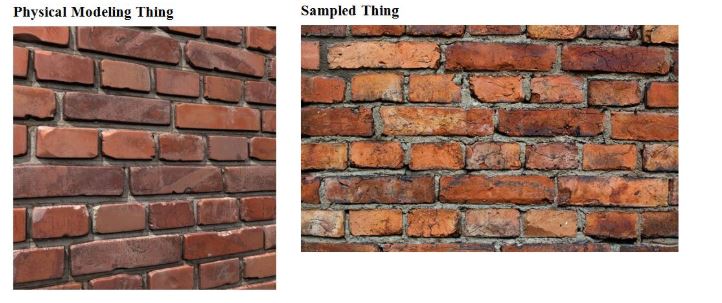Disney/Pixar films and shorts are some of the most widely viewed entertainment for both children and adults. The dynamic character and personality of talking cars, animals, and a princess who magically builds ice castles, are memorable. While beloved, it is evident that these characters are not real, but are computer animations. The same distinction can be made relating to physical modeling and real sounds for tone generation.
Physical sound modeling is a representation or a computer-generated “image” of a real-life object. Instead of sampling (recording), for example, an Aeolian-Skinner pipe and capturing all the nuances and characteristics of it, physical modeling attempts to build a computer-generated representation of pipes. Like the talking car, it results is a facsimile of the real thing.
The supplier of organs that use physical modeling supports this argument on their website. While incorrect regarding their comparison of sampling to a child’s drawing, they are correct when comparing Physical Modeling to a computer-generated image. This example on Viscount’s website: https://www.viscount-organs.com/technology/physis-basics/, shows that, while a nice computer-generated image of a structure, there is no doubt that it is computer generated and no one would mistake this image as real-life or even a photograph. Physical Modeling of an Aeolian-Skinner pipe is similar to a computer-generated image, while a sampled Aeolian-Skinner pipe is similar to a high-resolution digital photograph.
When comparing sound technologies, the gold-standard is to compare digital and pipe sounds in a pipe-combination installation. When listening to the Allen pipe-combination installation with sampling technology, it is impossible to distinguish the real pipes from the digital voices. Here is proof of this claim:
For comparison, here is an example of a Viscount Pipe-Combination installation:
Listen to the characteristic of the digital strings, specifically the celeste, which is in contrast to the commentary telling the viewer what they should hear. In addition, the technological explanation is geared to the tinkerer, explaining that this organ can “sound like you want it to,” and voiced, basically void of any school of organ building or general accepted norm. What organ committee even has such technical expertise? These must be left to the trained professional. a crucial party of what organ customers purchase. Imaging buying a car and being told that you, the customer, is responsible for the engine’s time and fuel mixture!
